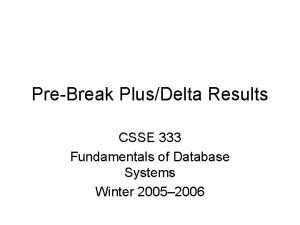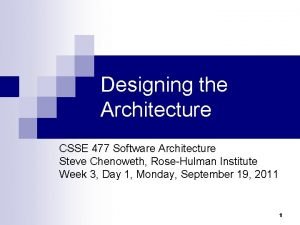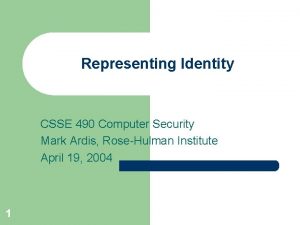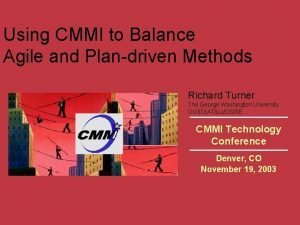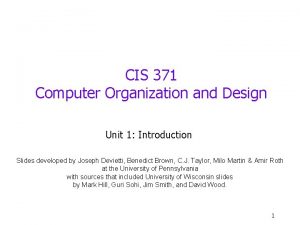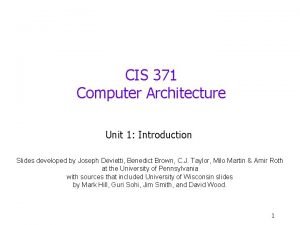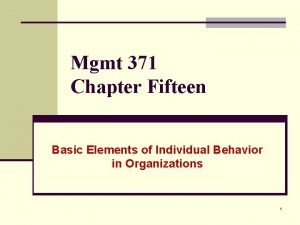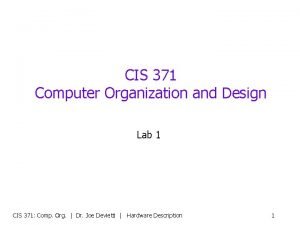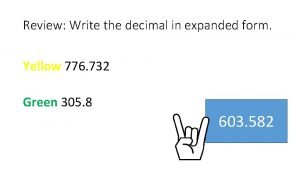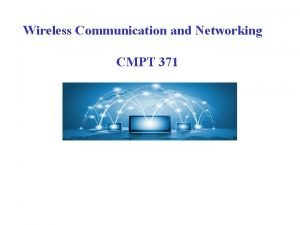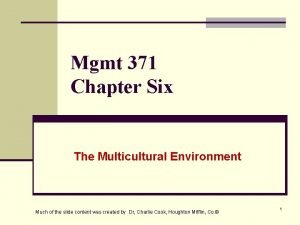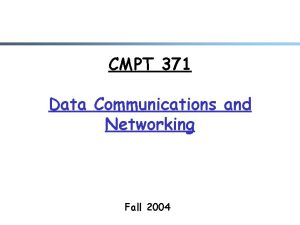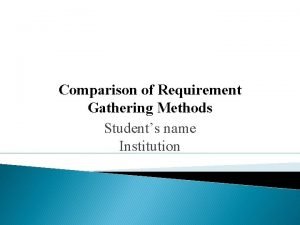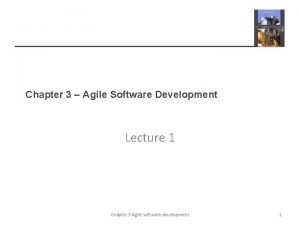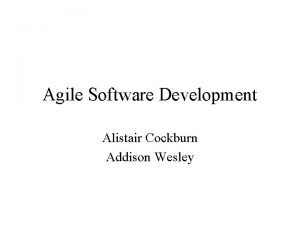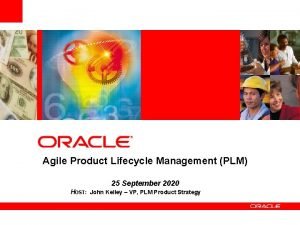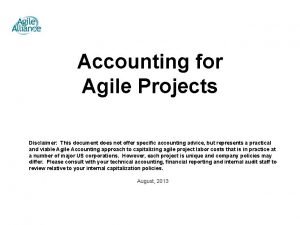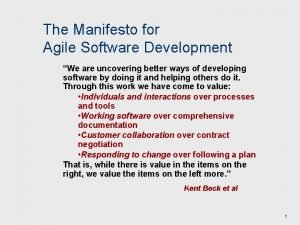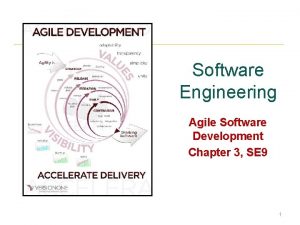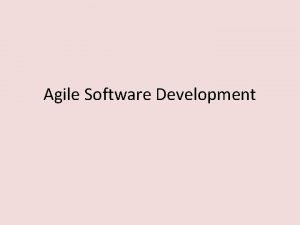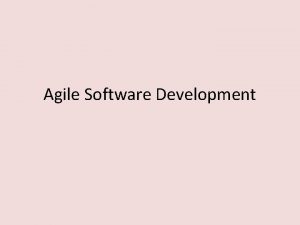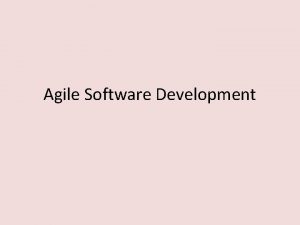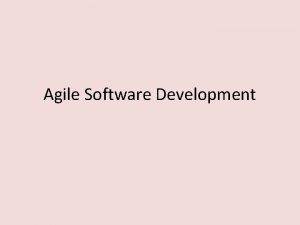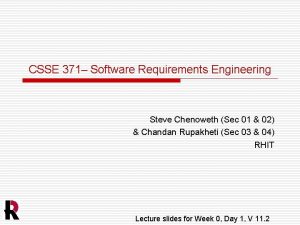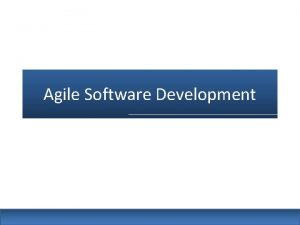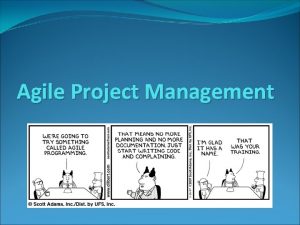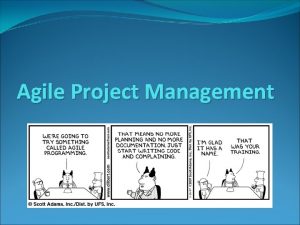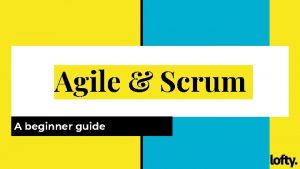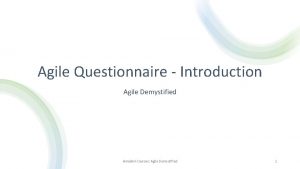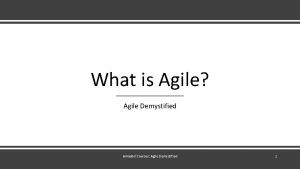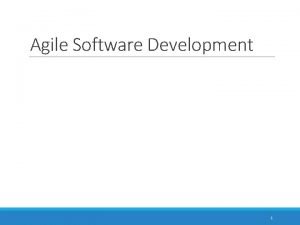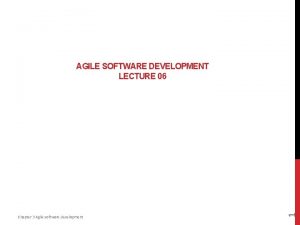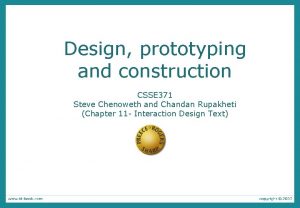Agile Requirements Methods CSSE 371 Software Requirements and





























- Slides: 29

Agile Requirements Methods CSSE 371 Software Requirements and Specification Mark Ardis, Rose-Hulman Institute October 18, 2005

Outline I. Origin of Agile Methods II. Extreme Programming III. How could this work? 2

I. Origin of Agile Methods 3

Cartoon of the Day 4

Spectrum of Methods Source: "Get ready for agile methods, with care" by Barry Boehm, IEEE Computer, January 2002. 5

Boehm's Risk Exposure Profile Black curve: Inadequate plans Red curve: Market share erosion Source: "Get ready for agile methods, with care" by Barry Boehm, IEEE Computer, January 2002. 6

Safety-Critical Profile Black curve: Inadequate plans Red curve: Market share erosion Source: "Get ready for agile methods, with care" by Barry Boehm, IEEE Computer, January 2002. 7

Agile Profile Black curve: Inadequate plans Red curve: Market share erosion Source: "Get ready for agile methods, with care" by Barry Boehm, IEEE Computer, January 2002. 8

Agile Manifesto • We are uncovering better ways of developing software by doing it and helping others do it. Through this work we have come to value: – Individuals and interactions over processes and tools – Working software over comprehensive documentation – Customer collaboration over contract negotiation – Responding to change over following a plan • That is, while there is value in the items on the right, we value the items on the left more. 9

II. Extreme Programming 10

Twelve Practices 1. The Planning Game 7. Pair programming 2. Small releases 8. Collective ownership 3. Metaphor 9. Continuous integration 4. Simple design 10. 40 -hour week 5. Testing 11. On-site customer 6. Refactoring 12. Coding standards 11

1. The Planning Game • Business people decide: – scope – priority – release dates • Technical people decide: – – estimates of effort technical consequences process detailed scheduling 12

The Planning Game • Collect User Stories on cards • Stories are written by customers • Stories generate tests 13

Estimating • Be concrete • No imposed estimates • Feedback: compare actuals to estimates • Re-estimate periodically 14

Scheduling • Each story gets an estimate of effort • Customers decide which stories are most important • Programmers calculate how long each release will take 15

2. Small Releases • Every release should be as small as possible • Every release has to completely implement its new features 16

Waterfall to XP Evolution Source: "Embracing change with extreme programming" by Kent Beck, IEEE Computer, October 1999. 17

3. Metaphor • Each XP project has its own metaphor – naive – system is a spreadsheet • Metaphor replaces architecture as the view from 10, 000 feet • Metaphor replaces vision statement 18

5. Testing • Any feature without an automated test does not exist. • Programmers need confidence in correct operation • Customers need confidence in correct operation • Develop test first, before code 19

Tools for Testing • Test harnesses for various programming languages • Simplify job of creating and running the tests 20

9. Continuous Integration • Integrate and test every few hours, at least once per day • All tests must pass • Easy to tell who broke the code 21

11. On-Site Customer • Real customer will use the finished system • Programmers need to ask questions of a real customer • Customer can get some other work done while sitting with programmers 22

III. How could this work? 23

1. The Planning Game • You couldn't start with only a rough plan • Unless: – customers did updating based on estimates of programmers – short releases (2) revealed any mistakes in plan – customer was sitting with programmers (11) to spot trouble 24

2. Small Releases • You couldn't release new versions so quickly • Unless: – the Planning Game (1) helped work on the most valuable stories – you were integrating continuously (9) – testing (5) reduced defect rate 25

3. Metaphor • You couldn't start with just a metaphor • Unless: – you got feedback on whether metaphor was working – your customer was comfortable talking about the system in terms of the metaphor – you refactored continually (6) to refine understanding 26

5. Testing • You couldn't write all those tests • Unless: – the design was as simple as possible (4) – you were programming with a partner (7) – you felt good seeing all those tests running – your customer felt good seeing all those tests running 27

9. Continuous Integration • You couldn't integrate every few hours • Unless: – you could run tests quickly (5) – you programmed in pairs (7) – you refactored (6) 28

11. On-Site Customer • You couldn't have a real customer sitting by the programmers full-time • Unless: – they could produce value by writing functional tests – they could produce value by making smallscale priority and scope decisions 29
 Csse results
Csse results Software architecture cartoon
Software architecture cartoon Mark ardis
Mark ardis Csse exam
Csse exam Using risk to balance agile and plan driven methods
Using risk to balance agile and plan driven methods Cis 371
Cis 371 Cis 371
Cis 371 Mgmt 371
Mgmt 371 387 hangi onluğa yuvarlanır
387 hangi onluğa yuvarlanır Cis 371
Cis 371 305 in word form
305 in word form Mgmt 371
Mgmt 371 Cmpt 371
Cmpt 371 Mgmt 371 final exam
Mgmt 371 final exam 6 371
6 371 Cmpt 371
Cmpt 371 Agile embedded software development
Agile embedded software development Agile methods with trello
Agile methods with trello Https://accenturedeliverysuite.accenture.com
Https://accenturedeliverysuite.accenture.com Material requirement planning advantages and disadvantages
Material requirement planning advantages and disadvantages Wax pattern fabrication
Wax pattern fabrication Peter williams microsoft
Peter williams microsoft Chapter 3 agile software development
Chapter 3 agile software development Alistair cockburn agile software development
Alistair cockburn agile software development Product lifecycle management agile
Product lifecycle management agile Accounting for agile software development
Accounting for agile software development Manifesto for agile software development
Manifesto for agile software development Agile view of process in software engineering
Agile view of process in software engineering Iso 9001 software development
Iso 9001 software development Chapter 3 agile software development
Chapter 3 agile software development
